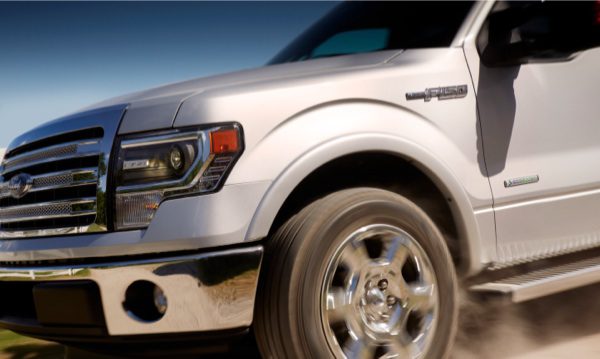
P012B Turbocharger / Supercharger Inlet Pressure Sensor Range
Content
OBD-II Trouble Code - P012B - Data Sheet
P012B - Turbocharger/Supercharger Inlet Pressure Sensor Circuit Range/Performance (Post Throttle)
What does DTC P012B mean?
This Diagnostic Trouble Code (DTC) is a generic transmission code, which means it applies to OBD-II equipped vehicles that have a pressure sensor upstream of the turbocharger or supercharger. The vehicle make may include, but is not limited to, Ford, Dodge, Saturn, Nissan, Subaru, Honda, etc. Despite the general nature, specific repair steps may vary depending on the brand / model / engine.
This particular code indicates a range or malfunction in the turbocharger / supercharger inlet pressure (TCIP) sensor circuit. The turbo / supercharger is responsible for increasing the "volumetric efficiency" (amount of air) in the combustion chamber by pressurizing the intake system.
Typically turbochargers are exhaust driven and superchargers are belt driven. The turbo/supercharger inlet is where they get filtered air from the air filter. The intake sensor works with the ECM (Electronic Control Module) or PCM (Powertrain Control Module) to monitor and regulate intake pressure.
"(After throttle)" indicates which intake sensor is faulty and its location. The pressure sensor can also include a temperature sensor.
This DTC is closely related to P012A, P012C, P012D, and P012E.
What are some of the symptoms of the code?
Symptoms of a P012B engine code may include:
- The car goes into emergency mode (fail-safe mode)
- Engine noise
- Low productivity
- Engine misfire
- stolling
- Poor fuel consumption
What are some of the common causes of a P012B code?
The reasons for the appearance of this code can be:
- Faulty turbocharger / supercharger inlet pressure sensor
- Broken or damaged wire harness
- General electrical system problem
- ECM problem
- Pin / connector problem. (e.g. corrosion, overheating, etc.)
- Clogged or damaged air filter
What are some troubleshooting steps?
Be sure to check the Technical Service Bulletins (TSB) for your vehicle. Gaining access to a known fix can save you time and money during diagnostics.
2013 Ford F150 EcoBoost P012B / P012D Bulletin 14-0082
For example, one of the famous bulletins is Ford TSB 14-0082, which refers to the 2013 Ford F-150 pickup trucks with a 3.5L EcoBoost V6 engine. If you have a code P012B and / or P012D for this vehicle, here is a copy of the full newsletter in PDF format. The fix is to replace the sensor and connector with updated parts, wire part number BU2Z-14S411-ATA and sensor part number CV2Z-9F479-A. Summary below:
Some 2013 F-150 vehicles equipped with 3.5L GTDI engines may have a Diagnostic Trouble Code (DTC) P012B (Turbocharger / Supercharger Inlet Pressure Sensor Circuit Range / Performance) and / or P012D (Turbocharger Inlet Pressure Sensor Circuit) turbocharger / supercharger inlet). high) is stored in the powertrain control module (PCM) memory.

Tools
Whenever you work with electrical systems, it is recommended that you have the following basic tools:
- OBD code reader
- multimeter
- Basic set of sockets
- Basic Ratchet and Wrench Sets
- Basic screwdriver set
- Rag / shop towels
- Battery terminal cleaner
- Service manual
Security
- Let the engine cool down
- Chalk circles
- Wear PPE (Personal Protective Equipment)
Basic step # 1
Visually inspect the TCIP and the surrounding area. Given the nature of these codes, it is highly likely that this issue is caused by some kind of physical problem. However, the harness should be checked carefully because the harness for these sensors usually goes over very hot areas. To determine which sensor circuit is faulty, refer to the Behind the Throttle Valve section. Downstream means after the throttle or on the side closer to the intake manifold. The throttle valve is usually installed on the intake manifold itself. Once you find the TCIP, trace the wires coming out of it and check for any frayed / frayed / cut wires that might be causing the problem. Depending on the location of the sensor on your make and model, you may have sufficient access to the sensor connector. If so, you can detach it and inspect the pins for corrosion.
NOTE. Green indicates corrosion. Visually inspect all grounding straps and look for rusty or loose ground connections. A problem in the overall electrical system can and will cause drivability problems, poor mileage among other unrelated problems.
Basic step # 2
Depending on the make and model of your vehicle, a diagram may be helpful. Fuse boxes can be located almost anywhere in the car, but it is best to stop first: under the dash, behind the glove box, under the hood, under the seat, etc. Find the fuse and make sure it fits snugly into the slot and that it is not blown up.
Basic tip # 3
Check your filter! Visually inspect the air filter for clogging or contamination. A clogged filter can cause a low pressure condition. Therefore, if the air filter is clogged or shows any signs of damage (eg water infiltration), it should be replaced. This is an economical way to avoid this because in most cases air filters are inexpensive and easy to replace.
NOTE. Check if the air filter can be cleaned. In this case, you can clean the filter instead of replacing the entire assembly.
Basic step # 4
If everything goes well at this stage, and you still cannot find the fault, I would check the circuit itself. This may involve disconnecting the electrical connector from the ECM or PCM, so make sure the battery is connected. Basic electrical testing of the circuit should be performed. (e.g. check continuity, short to ground, power, etc.). Any kind of open or short circuit will indicate a problem that needs to be corrected. Good luck!
Information for specific brands
P012B Ford – Turbocharger/Supercharger Intake Pressure Sensor Circuit Range/Performance Post Throttle
Need more help with code p012B?
If you still need help with DTC P012B, post a question in the comments below this article.
NOTE. This information is provided for informational purposes only. It is not intended to be used as a repair recommendation and we are not responsible for any action you take on any vehicle. All information on this site is protected by copyright.


4 comment
anonym
PO12B code keeps popping up,tried all I know but no success in findythe cause. I have an nv350 Nissan Urvan
Micah
PO12B code keeps popping up,tried all I know but no success in findythe cause. I have an nv350 Nissan Urvan
Emanuel van dunem
I did all the tests, but I still don't have a solution with code p012
Enzo
either a Turan petrol and CNG or always the engine code p012b